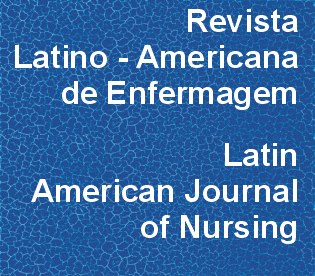Microbiological testing of devices used in maintaining peripheral venous catheters
DOI:
https://doi.org/10.1590/1518-8345.1528.2887Keywords:
Cross Infection, Vascular Access Devices, Catheters, Contamination, Bacteria, Drug Resistance, MicrobialAbstract
ABSTRACT Objective: to evaluate the use of peripheral venous catheters based on microbiological analysis of devices (dressing and three-way stopcocks) and thus contribute to the prevention and infection control. Methods: this was a prospective study of microbiological analysis of 30 three-way stopcocks (external surfaces and lumens) and 30 dressing used in maintaining the peripheral venous catheters of hospitalized adult patients. Results: all external surfaces, 40% of lumens, and 86.7% of dressing presented bacterial growth. The main species isolated in the lumen were 50% coagulase-negative Staphylococcus, 14.3% Staphylococcus aureus, and 14.3% Pseudomonas aeruginosa. Fifty nine percent of multidrug-resistant bacteria were isolated of the three-way stopcocks, 42% of the lumens, and 44% of the dressing with a predominance of coagulase-negative Staphylococcus resistant to methicillin. Besides, 18% gram-negative bacteria with resistance to carbapenems were identified from multidrug-resistant bacteria on the external surfaces of the three-way stopcocks. Conclusion: it is important to emphasize the isolation of coagulase-negative Staphylococcus and gram-negative bacteria resistant to methicillin and carbapenems in samples of devices, respectively, which reinforces the importance of nursing care in the maintenance of the biologically safe environment as well as prevention and infection control practices.Downloads
Download data is not yet available.
Downloads
Published
2017-01-01
Issue
Section
Original Articles
License
RLAE’s authorship concept is based on the substantial contribution by each of the individuals listed as authors, mainly in terms of conceiving and planning the research project, collecting or analyzing and interpreting data, writing and critical review. Indication of authors’ names under the article title is limited to six. If more, authors are listed on the online submission form under Acknowledgements. The possibility of including more than six authors will only be examined on multicenter studies, considering the explanations presented by the authors.Including names of authors whose contribution does not fit into the above criteria cannot be justified. Those names can be included in the Acknowledgements section.
Authors are fully responsible for the concepts disseminated in their manuscripts, which do not necessarily reflect the editors’ and editorial board’s opinion.
How to Cite
Microbiological testing of devices used in maintaining peripheral venous catheters. (2017). Revista Latino-Americana De Enfermagem, 25, e2887-. https://doi.org/10.1590/1518-8345.1528.2887



